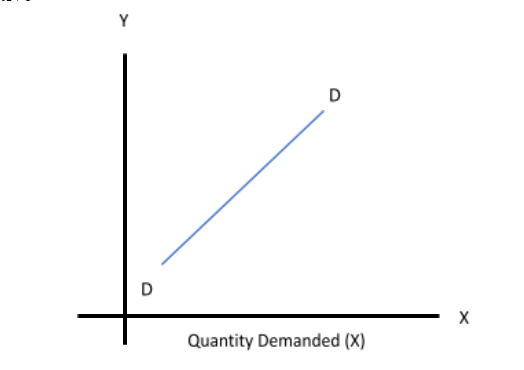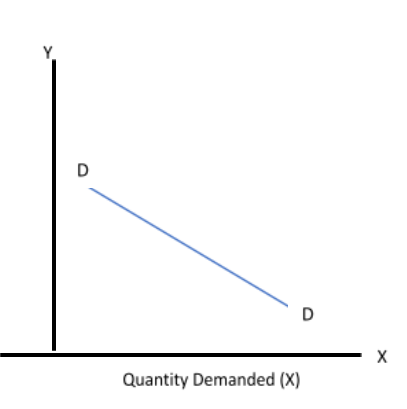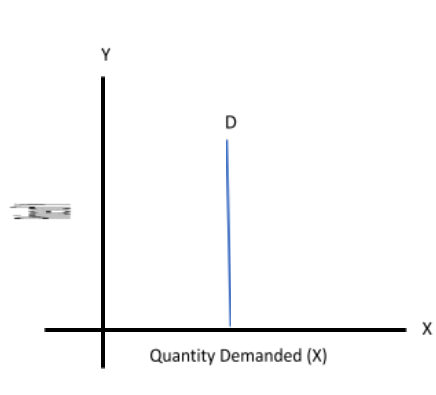The elasticity of demand is an important concept in Economics. In practical terms, the commodities are rarely completely independent of one another. They stand in a definite cluster of Substitutes and Complements. The relationship between two commodities X and Y can be Substitutive, Complement, or neutral. Therefore, the sensitiveness of demand of a commodity over another commodity in the market is measured by the cross elasticity of demand.
What is Cross elasticity of demand?
Now, what is cross elasticity of demand? Cross elasticity of demand means that the the fluctuations in the price of another commodity can affect the quantity demanded of a commodity. We can understand what is the cross elasticity of demand with the help of a diagram-
Positive
Negative
Zero
The cross elasticity of demand is defined as a ratio between the proportionate change in quantity demanded of Good X and the proportionate change in the price of related Good Y. Therefore, the cross elasticity of demand formula is as follows:
Cross Elasticity= Proportionate change in Quantity Demanded of Good XProportionate change in the Price of Good Y
Mathematically, the cross elasticity of demand formula is:
Ec = ∆QXQX∆PYPY
Here,
∆QX = it is the change in the Quantity Demanded of Good X
QX= it is the Original Demand of the Good X
PY= it is the change in the price of Good Y
∆PY= it is the Original Price of the Good Y
The cross elasticity of demand Formula helps in understanding consumer behaviour when it comes to substitute and complementary goods in the market.
Types of Cross elasticity of Demand
Let us understand the different types of cross elasticity of demand with the help of an example.
Let us assume that there are two commodities X and Y, which are Substitutive in nature. If the price of commodity Y increases, given that the price of commodity X remains constant, the quantity demanded of commodity X will increase. In case the commodities X and Y are a perfect substitute for one another, the Cross elasticity of demand will be Infinity. Therefore, Positive Cross elasticity of demand indicates that a change in a commodity will change the demand for another commodity in the same direction.
The type of cross elasticity of demand in which commodities are not related to one another is known as Zero Cross elasticity of demand. To explain, if two commodities have no substitutive nature in them, the Cross elasticity of demand will be Zero (0). This indicates that the price of one commodity will not have any impact on the quantity demanded of another commodity. For instance, there is no relation between the price of milk and the quantity demanded of clothes.
Now, let us assume that Commodities X and Y are complementary in nature. If the Price of Commodity Y increases, then the quantity Demanded of both Commodity X and Commodity Y will decrease. This is because of the Complementary nature of the Commodities. For instance, an increase in the price of milk will cause a decrease in the quantity demanded of Milk and Sugar. Because Sugar is used along with Milk. This type of cross elasticity of demand is known as Negative Elasticity of Demand- indicating that the Price of one commodity changes the quantity demanded of another commodity in an opposite direction.
Cross Elasticity in Business
Cross elasticity of demand has many uses in the business sector. Business Companies usually decide on their Prices for selling their products, based on their Cross Elasticity.
- The prices change incrementally based on the Cross Elasticity. On the other hand, Complementary Goods are priced based on Cross Elasticity.
- Cross Elasticity helps classify the type of market. High Elasticity indicates higher competition.
- Cross Elasticity helps in understanding the boundaries of different industries and the interrelationship between them. This is because Complementary Goods and Substitute Goods belong to different industries.
Substitute Goods & Complementary Goods
Substitute goods are goods which can be used in place of another good. These goods are replaceable. These goods produce the consumers with choices. Complementary Goods are goods that can be used as a combination with another commodity/goods. These commodities have joint demand.
Conclusion
An important part of Economic theories is the cross elasticity of demand. Cross elasticity looks at the proportional change in demand. As discussed, the different types of cross elasticity of demand- Positive, Negative, and Zero. Substitute Goods are associated with Positive Cross Elasticity. Complementary Goods are associated with Negative Cross Elasticity. And, the goods which have nothing in common are associated with Zero Cross elasticity of demands. With the help of the cross elasticity of the demand formula, one can understand the market arrangements.
 Profile
Profile Settings
Settings Refer your friends
Refer your friends Sign out
Sign out









